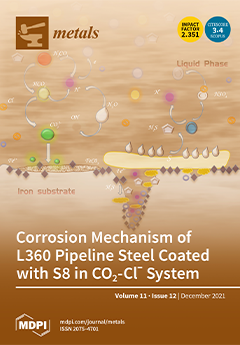It is important to control the deformation-induced martensitic transformation (DIMT) up to the latter part of the deformation to improve the uniform elongation (U.El) through the TRIP effect. In the present study, tensile tests with decreasing deformation temperatures were conducted to achieve continuous
[...] Read more.
It is important to control the deformation-induced martensitic transformation (DIMT) up to the latter part of the deformation to improve the uniform elongation (U.El) through the TRIP effect. In the present study, tensile tests with decreasing deformation temperatures were conducted to achieve continuous DIMT up to the latter part of the deformation. As a result, the U.El was improved by approximately 1.5 times compared with that in the tensile test conducted at 296 K. The enhancement of the U.El in the temperature change test was discussed with the use of neutron diffraction experiments. In the continuous DIMT behavior, a maximum transformation rate of about 0.4 was obtained at a true strain (
ε) of 0.2, which was larger than that in the tensile test at 296 K. The tensile deformation behavior of ferrite (
α), austenite (
γ), and deformation-induced martensite (
α′) phases were investigated from the viewpoint of the fraction weighted phase stress. The tensile test with a decreasing deformation temperature caused the increase of the fraction weighted phase stress of
α and that of
α′, which was affected by the DIMT behavior, resulting in the increase in the work hardening, and also controlled the ductility of
α and
α′, resulting in the enhancement of the U.El. Especially, the
α phase contributed to maintaining high strength instead of
α′ at a larger
ε. Therefore, not only the DIMT behavior but also the deformation behavior of
γ,
α, and
α′ are important in order to improve U.El due to the TRIP effect.
Full article





